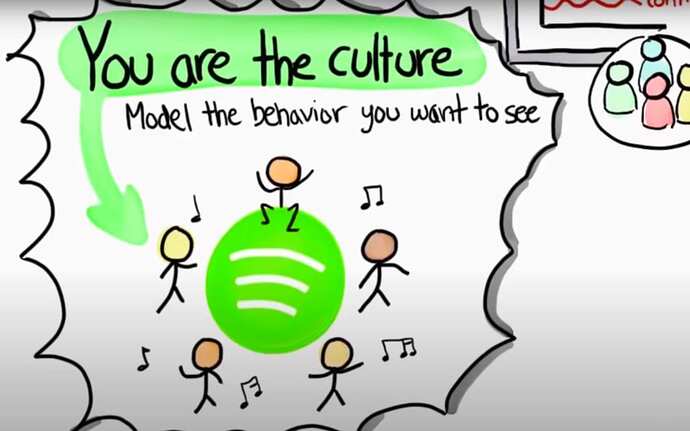CoderGlue: Let’s Code Together 
This topic was inspired by FedeProxy project, and my interactions on their forum. There’s a wink in the title, because “CoderGlue” name and icon design is just a proposal I made, as alternative more descriptive project name. Nothing more than that.
Culture and process
I really like how the team is setting up the FedeProxy project organisation. A thorough approach, deep thought, and proper preparation. So too on diversity:
@anon20068248: Diversity: First action
I’d like to propose that a first action is done to improve the diversity in the fedeproxy community. It is still tiny and it should not be too difficult
Two ideas:
- Add a Diversity section on https://fedeproxy.eu
- Call for ideas on mastodon
Referring to two other topics on FedeProxy forum and knitting things together:
- Your toot (or ‘post’) in https://forum.fedeproxy.eu/t/how-and-why-do-you-use-multiple-software-forges/88/8
- @anon20068248’s statement “I woke up this morning thinking that fedeproxy/coderglue should (must?) be developed in a federated way, from the beginning.” in https://forum.fedeproxy.eu/t/a-better-project-name/103/20
There’s some great feedback on the toot already, right? Loïc, you’ve got your audience right there on the fedi ![]()
Also we’ve got diversity in abundunce in fedi culture.
At SocialHub we just presented in our first “ActivityPub for Administrations” event the slogan and rallying cry “Social Networking Reimagined”, and described fedi culture as “United in Diversity”.
These two things can be embraced by FedeProxy, and become deeply engrained in your approach. First of all for your own project development. Here you can..
Dogfood your own development process that you’ll learn along the way, while dogfooding the fediverse.
And incorporate that in your ‘product experience’ i.e. as product features. I think your ‘proposition’ can be strongest the more you think about the Domain, and the less about the technical reality of what the software does (i.e. a bridge / proxy between code forges). In software development things all starts with culture and process.
I’ve worked with (scaled) agile in the past, as tech lead and product owner in quite large (200+ devs, 100+ consultants), quite diverse (60+ natiionalities) environment, where we adopted a Spotify Engineering Culture. I have also seen during my whole tech career (which has been mostly FOSS, fedi, humanetech advocacy & community volunteering for the past couple of years.. not much ‘career’ in that. It’s all humble pie ![]() ) plenty of times where processes, culture and communication are the bottlenecks to successful projects. Not the tech itself.
) plenty of times where processes, culture and communication are the bottlenecks to successful projects. Not the tech itself.
Here can be the absolute strong points of FedeProxy, that might make it a killer app! By thinking holistically about what the objective is, and go from there:
Facilitating great, open to anyone, community-driven, successful free software projects that can sustain themselves.
Now Spotify Engineering Culture is interesting. You can go for something similar, yet entirely different at the same time. Imagine if FedeProxy could deliver their own vision to open software development culture + processes with videos similar to these (look through the specifics, those are unimportant):
(and here’s the video of Part 1, more focused on Scrum / agile)
Discover the Domain
Now, is it worthwhile to go the extra mile and explore the above? It will certainly consume part of your funding in extra time spent.
But what you have to do anyway is to analyse and elaborate the application / ‘business’ domain where you want to reach your project objectives. Right now, FedeProxy is conducting User Research. Very good and utterly important to gather as much feedback as possible.
But there’s a possible pitfall too. What users are you researching? For what domain? Currently on the forum this occurs in the “UX / User research” category. But UX is a step too far, if you do not know the domain. There’s a risk to start thinking about concrete features and functionality, UI widgets even, way too fast.
Note that there’s no need to search for a new paradigm - which I have named “United Software Development” - in a full deep-dive either. Just determine if it can be in your Vision! Then from there you can work backwards, find stuff that may be Roadmap items, skin further.. until you drill-down to a MVP.
I feel that with a proper approach, FedeProxy may not be alone in chasing the paradigm. A host of other projects might spring up. This is the reason why I posted to Fediversity > Fediverse Futures instead of on the FedeProxy forum.
The “United Software Development” paradigm
To conclude this brainstorm topic, I’ll try to come up with a first definition of the new paradigm that I feel tingling below the surface, just waiting to be uncovered..
United Software Development
“Free, libre software development, processes and culture united,. Sustainable, open and accessible to anyone.”
Open source software has eaten the world. Free software is still struggling. FOSS maintainers have a very hard time to manage their projects, let alone sustain their own life with a decent income.
United software development leverages the decentralized web, and combines all the best-practices and lessons-learned in the past decades to shape a way forwards. To facilitate a collective crafting of humane technology where people are in control, and that is to the benefit of humanity.

 The examples make this much more concrete and it speaks to me now. Impressive pedagogical work
The examples make this much more concrete and it speaks to me now. Impressive pedagogical work 

 ) use BDD in their feature tests, e.g. for
) use BDD in their feature tests, e.g. for